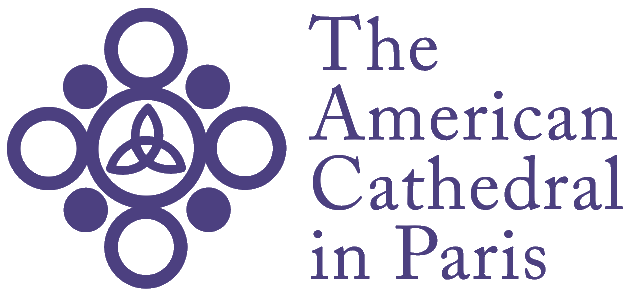Post-War Glamor and Growth 1950-1970
After the devastation of WWII, the American Cathedral joined the recovery effort to bring back the glow to the City of Light, organizing support groups and aid for refugees, creating young adult and youth groups, and offering services for the several thousand U.S. military men and women stationed in the Paris area.
Because Holy Trinity had been requisitioned by the German Army, the U.S. Army took it over at the liberation of Paris, declaring it “The Church for Protestants in the Armed Forces” (though not exclusively so). The Army added an early 7:00 a.m. communion and a 9:30 a.m. service for military personnel, officiated by an army chaplain. Dean Frederick Beekman soon returned from the United States to take charge.
In the late 1940s, the Women’s Auxiliary, which had met at the Quaker mission through the Occupation to make bandages and distribute aid to those in need, faded away, and the Monday Mission merged with the Junior Guild. Growing participation by women in charitable work combined with a prestigious annual rummage sale and glamorous galas gave the Junior Guild a strong social profile. Its first postwar gala featured Rita Hayworth’s film Gilda in 1947, and the stars themselves were featured subsequently: Audrey Hepburn in 1956, Elizabeth Taylor in 1957, Princess Grace of Monaco in 1968, among others.
Dean Riddle and Elizabeth Taylor, 1957.
In 1949, Dean Beekman retired and was succeeded by Rev. Sturgis Lee Riddle (1909-2003), previously rector of St. James Episcopal Church in Florence, Italy. Dean Riddle, along with his dynamic wife Betty, arrived with their own chauffeur and maid to steer the Cathedral through what he later called “the fat years”. The presence of NATO headquarters in the Paris area brought average congregations to 400 parishioners or more every Sunday. Dean Riddle reported 152 students registered in Sunday School in 1956, and 250 in 1961. Pledging members peaked at 263 in 1953. (While the number of annual pledges today remains steady at around 220, individual and one-time gifts have increased in recent years, according to Vestry Treasurer Edward Bates. The congregation numbers about 200 on any given Sunday, and Sunday School counts about 40 students. We are somewhat leaner today!)
Dean Riddle and company at France’s withdrawal from NATO.
But in 1967, President Charles de Gaulle withdrew France from NATO, and the party was over. The U.S. Air Force closed its eleven bases and flew to Stuttgart, the political staffs moved headquarters to Brussels, and the U.S. Sixth Fleet sailed for Naples. Riddle reported to the vestry in March 1967 that Holy Trinity had lost perhaps a third of its members: “Service individuals and families have made up an important part of our congregations and contributed devotedly their interest, leadership, and offerings. We shall miss them sorely, ever be grateful for all they have meant to our Church in Paris over the years, and cherish them among our world-wide ‘alumni’.”
As the late 1960s brought challenges to power and chaos to the streets, matched by efforts to find peace in Vietnam, the American Cathedral was steadfast through it all. U.S. Ambassador Sargent Shriver and his wife Eunice Kennedy Shriver were frequent guests, and a memorial service for former President Dwight D. Eisenhower drew some 1,500 attendees, including the French prime minister. While the American community in and visitors to Paris had been reduced markedly, the Cathedral remained active and important to those who remained.
Dean Riddle retired in 1974 after twenty-five years at the helm of the Cathedral. He and Betty returned to New York, where he founded the Friends of the American Cathedral association of former church members and attendees—his fond “alumni” of the Paris years. The Friends group today counts more than 350 members around the world.


